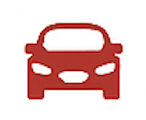Everyday Transportation, Motor Trends, and Automotive Life in Tanzania
A Country of Motorbikes, Buses, and Toyota Dominance
Tanzania's car culture is defined not just by private ownership but also by its heavy reliance on public transport and informal transit systems. In cities like Dar es Salaam, dala dalas—privately owned minibuses—are a dominant mode of transport, serving millions of residents daily. These minibuses, often painted in bright colors and adorned with slogans, are central to urban mobility and offer insight into local tastes and economic pragmatism.
The majority of privately owned vehicles in Tanzania are second-hand imports, particularly from Japan. Toyota models, such as the Toyota Probox, Noah, and Land Cruiser, are especially popular due to their affordability, ease of maintenance, and durability on the country's varied terrain. While luxury vehicles exist, they remain rare and are typically owned by the wealthy elite or government officials.
Motorbikes, known locally as 'bodaboda', are essential in both urban and rural areas for short-distance travel and delivery services. With low entry costs and high maneuverability, they offer quick transit where roads are poor or traffic is congested. However, their rise has also brought safety and regulatory challenges, prompting various local governments to introduce helmet laws and licensing efforts.
Imported Vehicles and Tanzania's Right-Hand Drive Preference
As a former British territory, Tanzania follows the right-hand drive (RHD) system, with vehicles driving on the left side of the road. This aligns with its major import partners, especially Japan and the UK, which export used RHD vehicles. Japanese used car auctions provide a steady supply of affordable, well-maintained vehicles that meet Tanzanian road conditions.
Import duties and taxes on vehicles are relatively high, which leads many Tanzanians to purchase older vehicles to keep costs down. Importers often navigate complex logistics and bureaucratic processes to bring cars through ports like Dar es Salaam. As a result, the used car market in Tanzania is large, informal, and highly competitive, with dealerships operating alongside independent sellers and online platforms.
Government policies have also affected import trends. For example, there have been periodic proposals to restrict the age of imported vehicles to curb environmental concerns and improve safety, though enforcement has been inconsistent. Despite these efforts, many cars on Tanzanian roads are more than 10 years old, reflecting economic constraints faced by the average buyer.
Car Modification, Personalization, and Utility Vehicles
While Tanzania is not known for a large-scale car tuning or street racing scene, vehicle customization is nonetheless a part of local car culture. Many dala dalas and bodabodas are customized with colorful designs, pop culture references, or religious iconography, serving as rolling expressions of personality or belief. Paint jobs, sound systems, and decals are commonly used for both aesthetic and practical branding purposes.
In rural regions, 4x4 vehicles such as the Toyota Land Cruiser and Nissan Patrol are valued for their off-road capabilities. These vehicles are essential for reaching remote areas with poor infrastructure, especially during the rainy season. In agriculture-heavy areas, pickups and utility vehicles are often modified to transport farm goods or livestock, making them vital tools rather than status symbols.
Some urban youth have shown growing interest in low-budget performance enhancements and imported accessories, although this remains a niche pursuit. Online forums and Facebook groups have emerged where Tanzanians share photos of their cars, exchange maintenance tips, or organize informal meetups, indicating a slowly growing enthusiast community despite financial and regulatory limitations.
Road Conditions, Driving Habits, and Vehicle Maintenance Challenges
Driving in Tanzania requires skill and attentiveness due to a mix of road conditions, from paved highways to unmaintained dirt roads. Urban traffic congestion, especially in Dar es Salaam, can be severe, with intersections often lacking traffic signals or enforcement. Outside of cities, drivers must navigate potholes, livestock crossings, and unpredictable weather impacts on unsealed roads.
Routine maintenance is critical due to these harsh conditions, yet access to quality repair services is uneven across the country. In urban centers, established auto shops and parts dealers offer reliable services for common vehicle brands. However, in rural areas, many vehicle owners rely on informal mechanics who may lack formal training but are adept at improvising repairs with limited tools.
The availability of spare parts is a recurring issue. While Japanese models are favored in part because of parts availability, fluctuations in import logistics and pricing can delay repairs. This has led to the widespread use of second-hand parts, and even improvisational fixes, particularly among owners of older vehicles.
Car Ownership and Mobility in the Context of Urban Growth
Car ownership in Tanzania is still relatively low, with a large segment of the population relying on public transportation or motorcycles for daily mobility. According to the National Bureau of Statistics, the majority of Tanzanians live in rural areas where road infrastructure is limited and vehicle ownership is not feasible. In urban areas, however, the growing middle class has fueled rising demand for private vehicles.
Dar es Salaam, the country's largest city, faces particular challenges related to urban growth and transportation demand. Traffic congestion, limited parking, and a rapidly increasing population have outpaced the development of road infrastructure. In response, the city introduced the Dar es Salaam Bus Rapid Transit (BRT) system, a public transport innovation aimed at reducing travel time and congestion for thousands of commuters.
Despite infrastructure constraints, owning a car is still viewed by many Tanzanians as a symbol of success and social mobility. For entrepreneurs, taxis and ride-sharing vehicles offer an income opportunity, while professionals often aspire to upgrade from motorcycles or public transport to personal cars. As the economy continues to grow, car ownership is expected to rise, further transforming the nation's transportation landscape.
